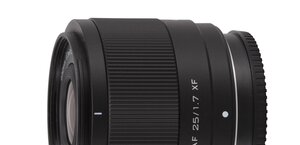Tamron SP 150-600 mm f/5-6.3 Di VC USD
4. Image resolution
The Tamron is bound to be compared with the Canon 100-400L or the Sigma 150-500 mm. Those lenses were tested on the Canon 20D. Although the pixel density of the 20D and the1Ds MkIII sensors is the same, the second body can generate a bit higher MTFs as we showed in the test of the Canon EF 100 mm f/2.8L IS USM Macro. The difference is not big, amounting to about 1-2 lpmm, but you must remember about it if you want to be thorough and accurate.
First let’s see how the tested Tamron fares in the frame centre. The results at 150, 300, 450 and 600 mm focal lengths are presented on the graph below.
Please Support UsIf you enjoy our reviews and articles, and you want us to continue our work please, support our website by donating through PayPal. The funds are going to be used for paying our editorial team, renting servers, and equipping our testing studio; only that way we will be able to continue providing you interesting content for free. |
- - - - - - - - - - - - - - - - - - - - - - - - - - - - - - - - - - - - - - - - - - - - - - - -
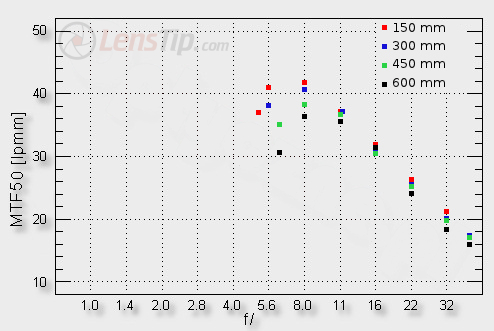
We have no doubt here: we are looking at the nicest graph in this class of equipment. The results at the shortest focal lengths are very good. What’s more, at the maximum focal length, which is also usually the weakest, the lens can provide useful images even wide open. Mind you the Tamron’s task was the most difficult here as it is the first lens in this class that offers the 600 mm focal length. If you glance at the 300-450 mm range and compare it to the results of the Canon 100-400L in the 300-400 mm range, the Tamron fares as well or even a tad better, even after deducting those 1-2 lpmm. Taking into account the fact that the Tamron provides a wider focal range, a better stabilization and is cheaper, it is a truly impressive result!
The edge of the APS-C/DX sensor can be described in similar manner.
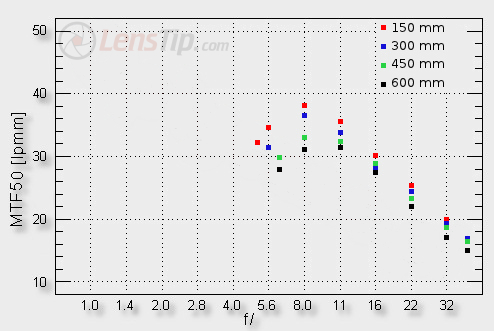
The Tamron fares here better than the Sigmas and loses to the Canon but only slightly. The Canon was more even at every focal length; even at the maximum relative aperture it exceeded noticeably a level of 30 lpmm. The Tamron manages to do so only in the 150-300 mm range. The longer end is a bit worse but you have to admit the results are very close to full usefulness. After applying f/8.0 aperture the image becomes completely acceptable.
Of course the edge of full frame is always the biggest challenge. The performance of the Tamron in that place of the frame presents the graph below.
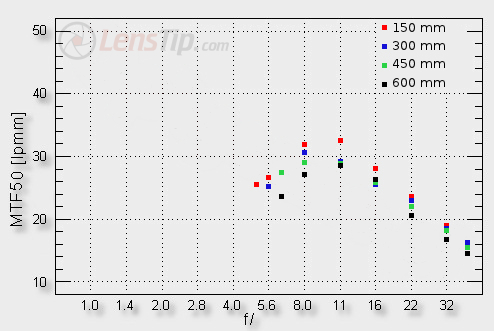
Here the lens failed but, after all, nobody expected it to succeed. An optical instrument of such a class is not designed to get perfectly sharp images across the frame. It’s enough the image is acceptable on stopping down to f/8.0- 11.0 - the Tamron more or less achieves that much so it would be difficult to complain.
At the end of this chapter, traditionally, we present crops taken from our resolution testing chart photos saved as JPEG files.
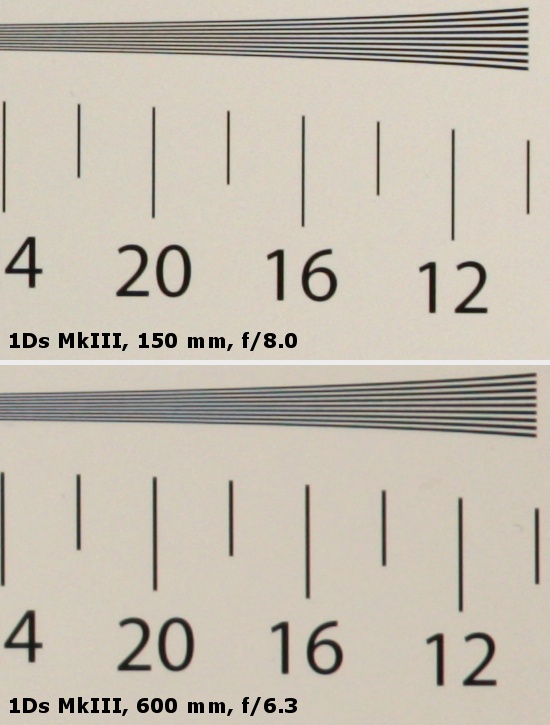 |






